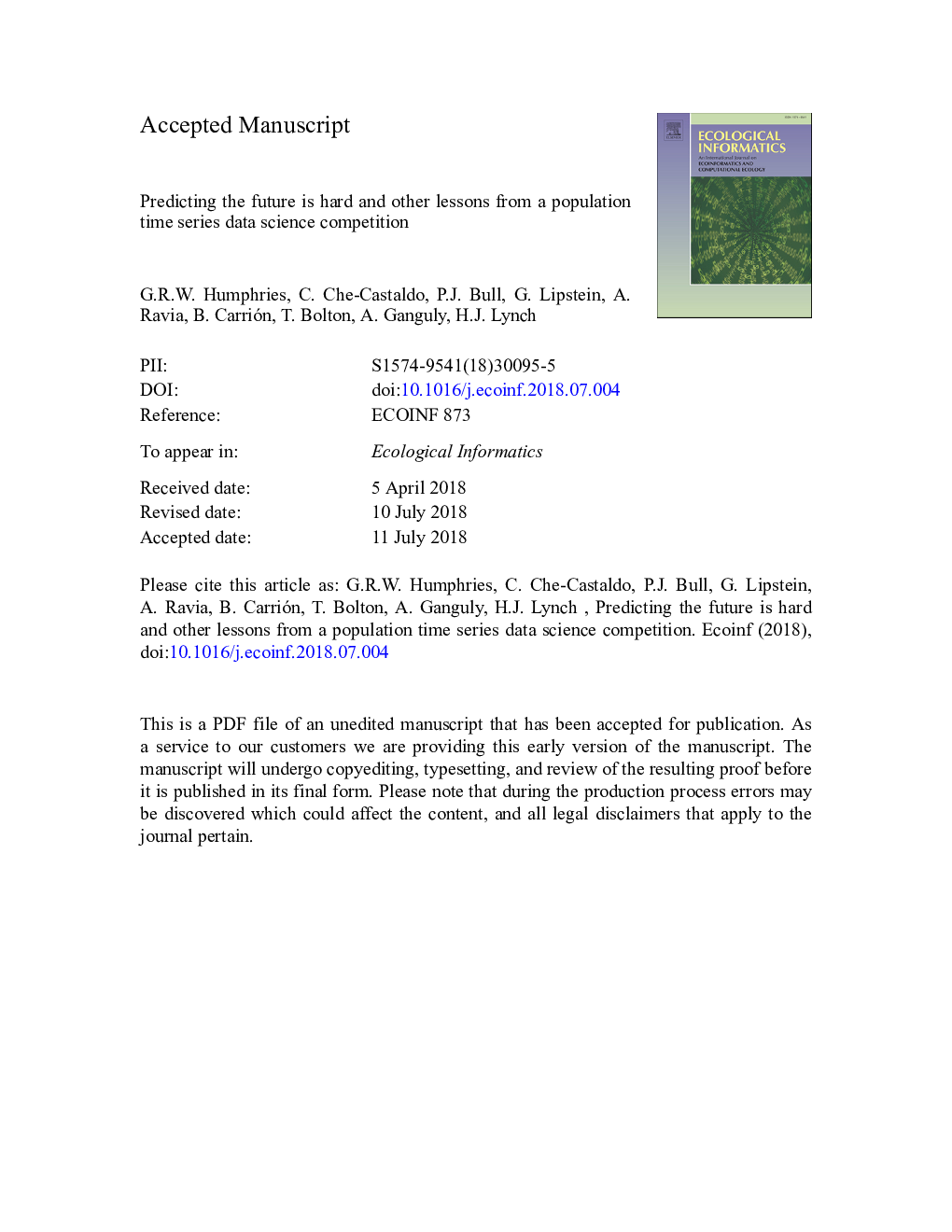| Article ID | Journal | Published Year | Pages | File Type |
|---|---|---|---|---|
| 8845781 | Ecological Informatics | 2018 | 44 Pages |
Abstract
Population forecasting, in which past dynamics are used to make predictions of future state, has many real-world applications. While time series of animal abundance are often modeled in ways that aim to capture the underlying biological processes involved, doing so is neither necessary nor sufficient for making good predictions. Here we report on a data science competition focused on modelling time series of Antarctic penguin abundance. We describe the best performing submitted models and compare them to a Bayesian model previously developed by domain experts and build an ensemble model that outperforms the individual component models in prediction accuracy. The top performing models varied tremendously in model complexity, ranging from very simple forward extrapolations of average growth rate to ensembles of models integrating recently developed machine learning techniques. Despite the short time frame for the competition, four of the submitted models outperformed the model previously created by the team of domain experts. We discuss the structure of the best performing models and components therein that might be useful for other ecological applications, the benefit of creating ensembles of models for ecological prediction, and the costs and benefits of including detailed domain expertise in ecological modelling. Additionally, we discuss the benefits of data science competitions, among which are increased visibility for challenging science questions, the generation of new techniques not yet adopted within the ecological community, and the ability to generate ensemble model forecasts that directly address model uncertainty.
Related Topics
Life Sciences
Agricultural and Biological Sciences
Ecology, Evolution, Behavior and Systematics
Authors
Humphries G.R.W., Che-Castaldo C., Bull P.J., Lipstein G., Ravia A., Carrión B., Bolton T., Ganguly A., Lynch H.J.,
